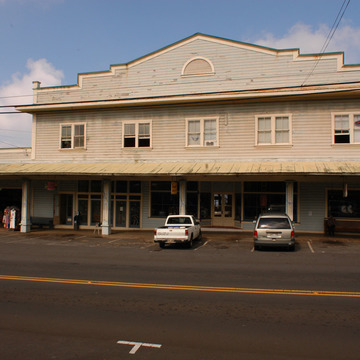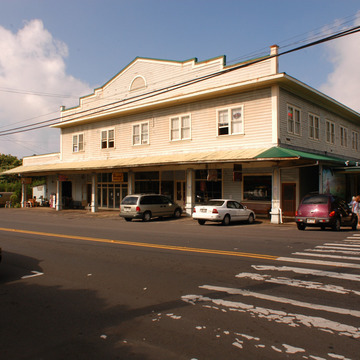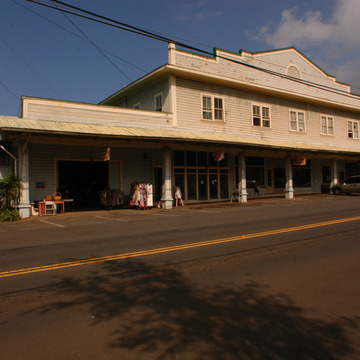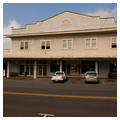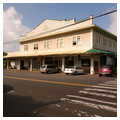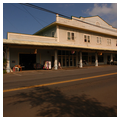With its colonnaded walk and stepped gable rising to a pediment-like chevron, the two-story Botelho Garage proclaimed the emergence of the automobile in rural Hawaii. One of the major buildings on Mamane Street, it served a multiplicity of needs. Automobiles were serviced at the more functional, single-story end of the building, while the store sold automobile parts and accessories, hardware, and paint. The first post office in town was housed on the first floor, and professional offices and a dance hall were on the second. This building also gave Honokaa its first electric sign. Manuel S. Botelho came to Hawaii at the age of one, attended public schools, then went to college in Indiana. He practiced law upon his return to Hawaii, but quickly realized that the auto industry held great opportunities. In 1914, he opened a garage at the present building's location. In addition to managing the garage, Botelho also served as judge of the district court of Hamakua.
You are here
Botelho Building
If SAH Archipedia has been useful to you, please consider supporting it.
SAH Archipedia tells the story of the United States through its buildings, landscapes, and cities. This freely available resource empowers the public with authoritative knowledge that deepens their understanding and appreciation of the built environment. But the Society of Architectural Historians, which created SAH Archipedia with University of Virginia Press, needs your support to maintain the high-caliber research, writing, photography, cartography, editing, design, and programming that make SAH Archipedia a trusted online resource available to all who value the history of place, heritage tourism, and learning.


